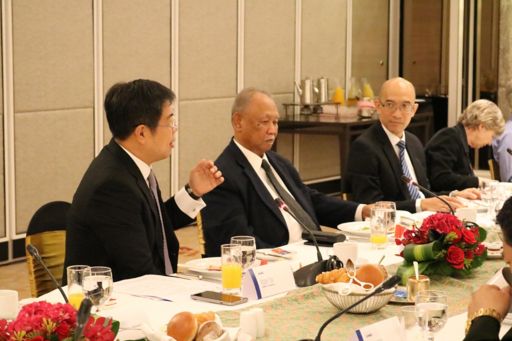Responding to a connected, data-driven business environment: Auditor perspectives
The need for the audit to develop in new and innovative ways has been a clear theme in my discussions with KPMG audit partners across the network. They are in no doubt that innovation around how data is analyzed is absolutely critical in order for the audit to stay relevant.
But what form must this innovation take? Much of it comes down to integrating new technology into audit processes and techniques — in particular data analytics. This is something that has been progressively increasing in recent years and is only set to grow further in the future with the use of ever more powerful technology including robotic process automation, natural language processing and machine learning.
A quantum leap
We can envisage a ‘quantum leap’ through such technologies — enabling the analysis of unstructured data, the ability to draw correlations across massive amounts of data, advancing the identification of any outliers or anomalies for further investigation, and the delivery of more granular insights to companies and their audit committees.
In addition, the advent of the blockchain creates new opportunities for transparency and accountability and will require an appropriate level of assurance which auditors are well-positioned to provide.
We have also invested in creating what we call a ‘smart audit platform’, known as KPMG Clara, that brings all of our data analytical capabilities into one place and through which insights can be shared with clients on a real-time basis. This enables our people to work smarter and enhances the audit experience for clients.

A win-win
The result of all this investment in technology is a win-win for both auditors and companies: increased efficiencies for clients preparing for the audit, surfacing new audit evidence and a more targeted focus on audit risk areas.
But the innovation needed from auditors is not only about technology, important as that is. The KPMG partners I have been talking to have been clear that there are other important ways in which new approaches are needed too.
One of the most significant of these is to extend or expand auditor reporting. As we have also summarized in the Communication summary, there is a recognition that the traditional binary auditor report is insufficient. Auditors have more to offer investors and stakeholders in terms of giving a deeper and fuller view of the considerations and judgments made by the auditor.
The expanded auditor report has been introduced in a growing number of countries around the world, and reactions have been positive.
Other necessary innovations include expanding the scope of what gets audited. Increasingly, investors and other stakeholders are more interested in a forward-looking view of a company, in addition to attestation over historical figures. They are also focused on many non-GAAP measures.
There was a view in the discussions that, in the future, the market and investors are going to need, or potentially demand, some form of independent assurance.
An innovation challenge
The innovation challenge for auditors, therefore, is a broad one. Technology is a key facet of it, but it is by no means only that. Everything must be geared towards giving more sophisticated and nuanced insights that are delivered in a more timely way.
Will we eventually reach the point where we have a continuous audit process and provide assurance on information on a contemporaneous or real-time basis? We will have to see how things develop — but that could be the direction of travel.
There’s an innovation challenge for all of us to keep the audit and corporate reporting relevant in today’s digital, highly interconnected world.
All references to 'KPMG', 'us' and 'we' refer to KPMG's network of member firms.
Connect with us
- Find office locations kpmg.findOfficeLocations
- kpmg.emailUs
- Social media @ KPMG kpmg.socialMedia
